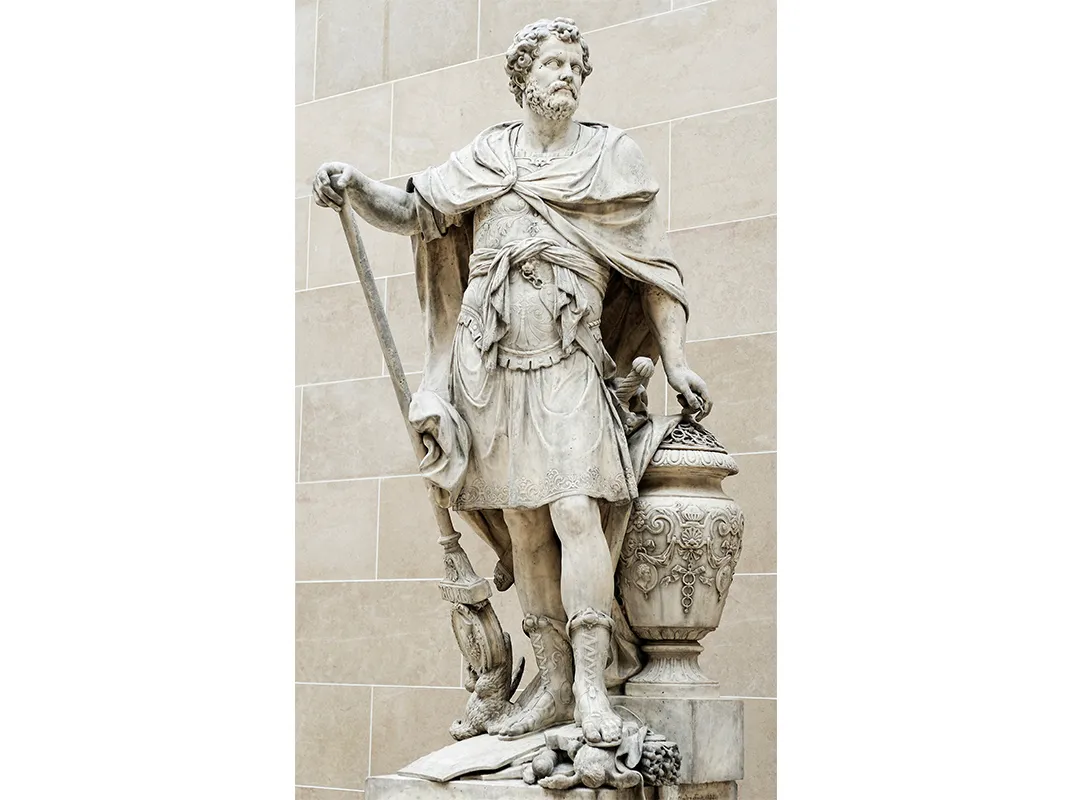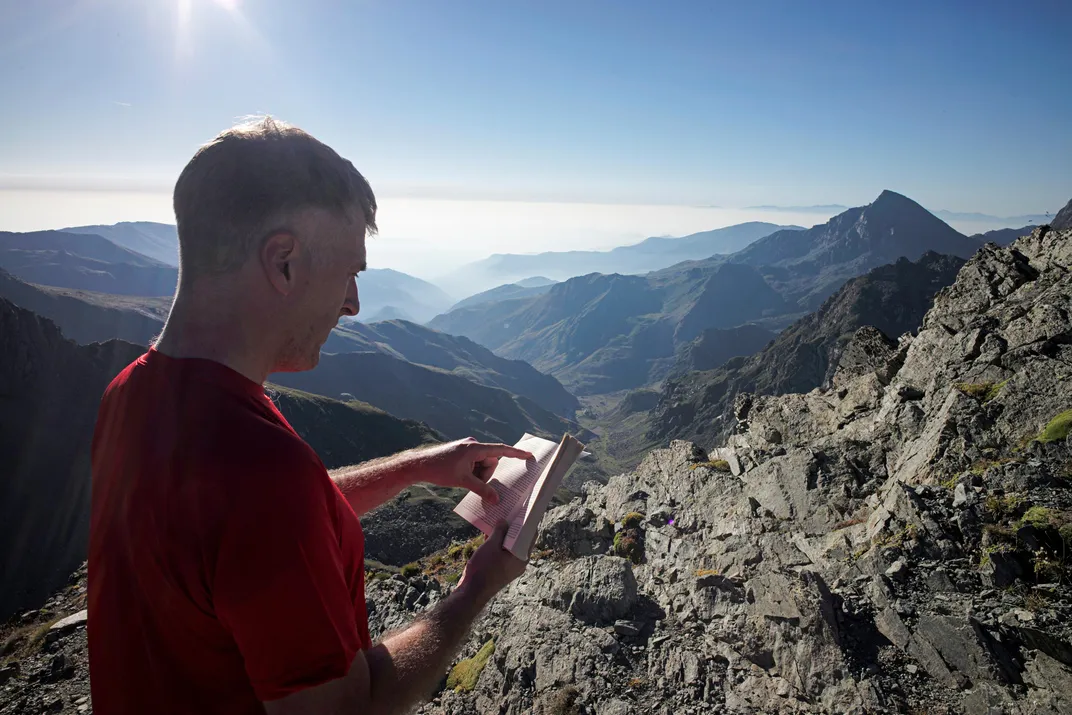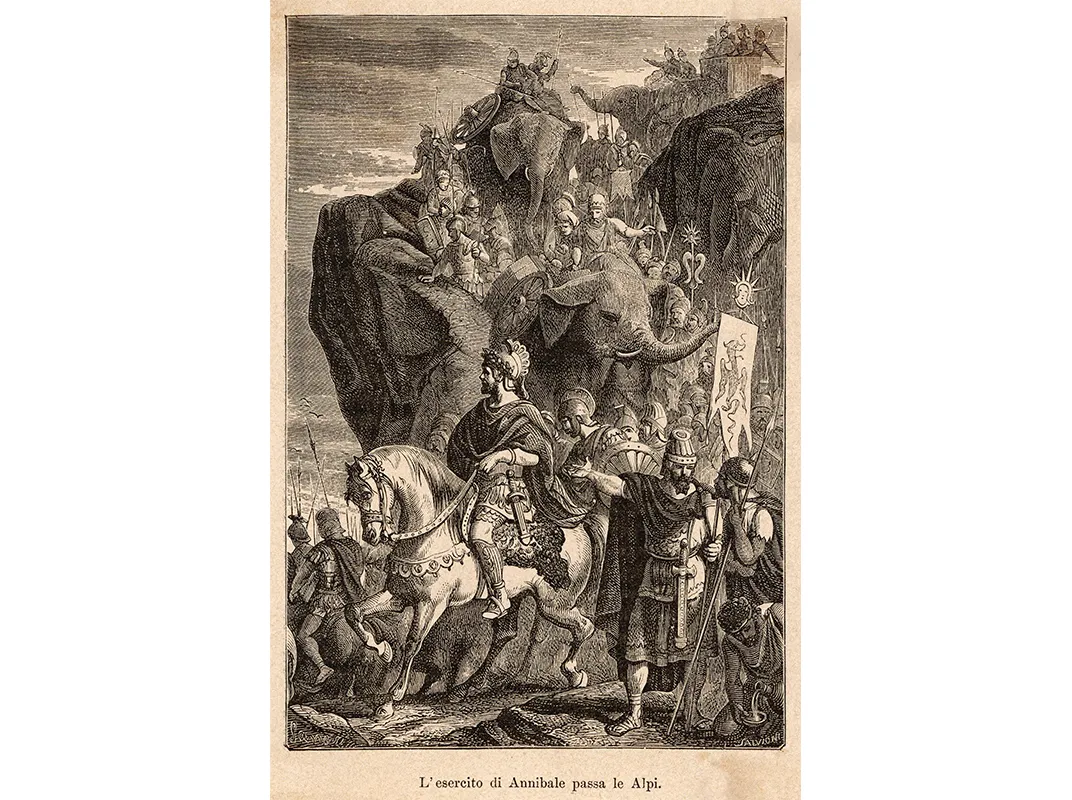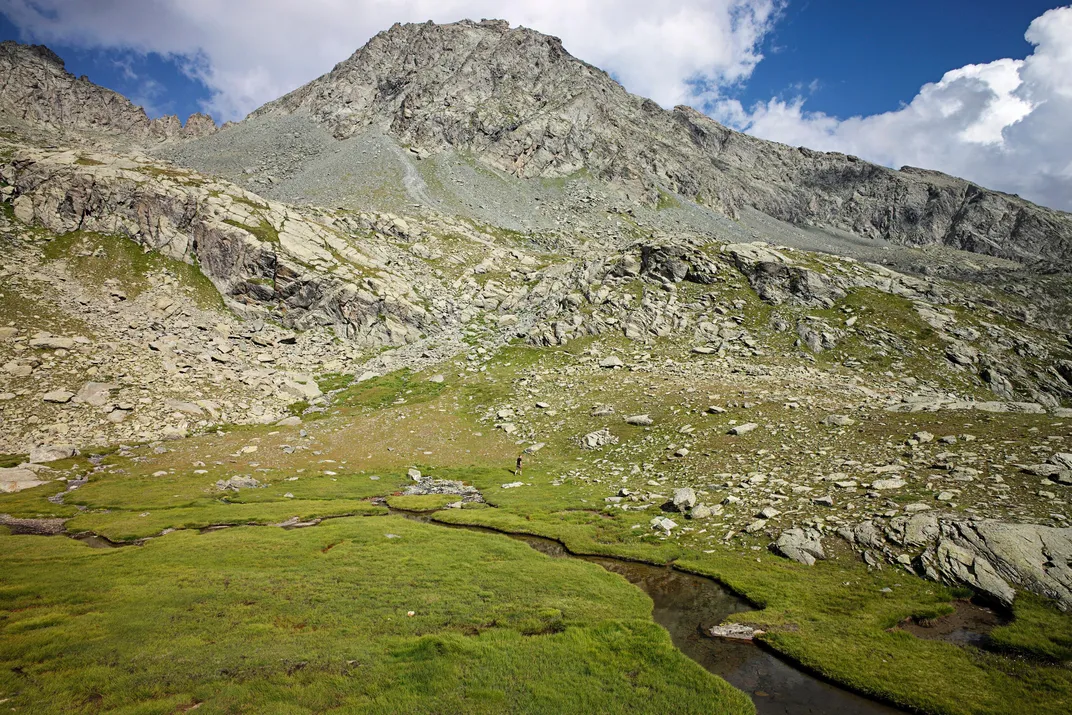How (and Where) Did Hannibal Cross the Alps?
He pulled off one of the greatest military feats ever. Now new scientific evidence points to Hannibal’s legendary route to Rome
/https://tf-cmsv2-smithsonianmag-media.s3.amazonaws.com/filer/e8/89/e88999a4-c03d-4bb1-b3e8-870e4599e210/julaug2017_e05_hannibal.jpg)
Chris Allen perches on a ledge of the Col de la Traversette, thinking hard, listening to silence, looking at the unseen. As pale as paper and nearly as thin, the 50-year-old microbiologist has spent the better part of this midsummer morning climbing the narrow mountain pass that lies at the border southeast of Grenoble in France and southwest of Turin in Italy. And now, staring into the mists of antiquity, he imagines a scene that may have unfolded here 2,235 years ago: the Carthaginian general Hannibal mustering his downcast troops during their brazen invasion of the Roman Republic at the start of the Second Punic War.
On Allen’s left, a cutting wind scythes across a row of rock needles and down to the valley on the Italian side, nearly 10,000 feet below. To his right, Mount Viso—the twin-peaked colossus—looms against a bowl-blue sky. Allen reaches into his rucksack, withdraws a copy of Polybius’ Histories and reads a passage aloud: “Hannibal could see that the hardship they had experienced, and the anticipation of more to come, had sapped morale throughout the army. He convened an assembly and tried to raise their spirits, though his only asset was the visibility of Italy, which spreads out under the mountains in such a way that, from a panoramic perspective, the Alps form the acropolis of all Italy.”
The moment hangs in the air. “What road led Hannibal to Rome?” Allen asks a visitor from America. The vexed question is one of those problems on the borderline of history and geography that are fascinating and perhaps insoluble. Much ink has been spilled in pinpointing the route of Hannibal’s improbable five-month, thousand-mile trek from Catalonia across the Pyrenees, through the Languedoc to the banks of the Rhone, and then over the Alps to the plains of Italy. Many boots have been worn out in determining the alpine pass through which tens of thousands of foot soldiers and cavalrymen, thousands of horses and mules, and, famously, 37 African battle elephants tramped.
Speculation on the crossing place stretches back more than two millennia to when Rome and Carthage, a North African city-state in what is now Tunisia, were superpowers vying for supremacy in the Mediterranean. No Carthaginian sources of any kind have survived, and the accounts by the Greek historian Polybius (written about 70 years after the march) and his Roman counterpart Livy (120 years after that) are maddeningly vague. There are no fewer than a dozen rival theories advanced by a rich confusion of academics, antiquarians and statesmen who contradict one another and sometimes themselves. Napoleon Bonaparte favored a northern route through the Col du Mont Cenis. Edward Gibbon, author of The Decline and Fall of the Roman Empire, was said to be a fan of the Col du Montgenèvre. Sir Gavin de Beer, a onetime director of what is now the Natural History Museum in London, championed the Traversette, the gnarliest and most southerly course. In 1959, Cambridge engineering student John Hoyte borrowed an elephant named Jumbo from the Turin zoo and set out to prove the Col du Clapier (sometimes called the Col du Clapier-Savine Coche) was the real trunk road—but ultimately took the Mont Cenis route into Italy. Others have charted itineraries over the Col du Petit St. Bernard, the Col du l’Argentière and combinations of the above that looped north to south to north again. To borrow a line attributed to Mark Twain, riffing on a different controversy: “The researches of many commentators have already thrown much darkness on this subject, and it is probable that, if they continue, we shall soon know nothing at all about it.”
A relative newcomer to the debate, Allen insists that until now no hard material evidence has been presented that would indicate the most likely path. “Nada, zero, zip, zilch,” he says. “Everything has been guesswork based on readings of the classical texts.” He believes that he and his team of collaborators—led by Canadian geomorphologist Bill Mahaney—recently unearthed the first compelling clues, thanks to a massive patty of ancientmanure.
Embedded 16 inches deep in a bog on the French side of the Traversette is a thin layer of churned-up, compacted scat that suggests a large footfall by thousands of mammals at some point in the past. “If Hannibal had hauled his traveling circus over the pass, he would have stopped at the mire to water and feed the beasts,” reasons Allen. “And if that many horses, mules and, for that matter, elephants did graze there, they would have left behind a MAD.” That’s the acronym for what microbiologists delicately term a “mass animal deposition.”
By examining sediment from two cores and a trench—mostly soil matted with decomposed plant fiber—Allen and his crew have identified genetic materials that contain high concentrations of DNA fragments from Clostridia, bacteria that typically make up only 2 or 3 percent of peat microbes, but more than 70 percent of those found in the gut of horses. The bed of excrement also contained unusual levels of bile acids and fatty compounds found in the digestive tracts of horses and ruminants. Allen is most excited about having isolated parasite eggs—associated with gut tapeworms—preserved in the site like tiny genetic time capsules.
“The DNA detected in the mire was protected in bacterial endospores that can survive in soil for thousands of years,” he says. Analyses by the team, including carbon dating, suggest that the excreta dug up at the Traversette site could date to well within the ballpark of the Punic forces’ traverse.
Since Allen’s conclusions at times rest on the slippery slopes of conjecture, what they add up to is open to considerable interpretation. Andrew Wilson, of the Institute of Archaeology at the University of Oxford, maintains that the date range doesn’t follow from the data presented, and that the MAD layer could have accumulated over several centuries. Allen, a lecturer at Queen’s University Belfast, is unfazed. “I believe in hypothesis-driven science,” he says. “Naturally, some people are going to be skeptical of our deductions and say they are—for lack of a better word—crap. Which is perfectly healthy, of course. Skepticism is what science is all about.”
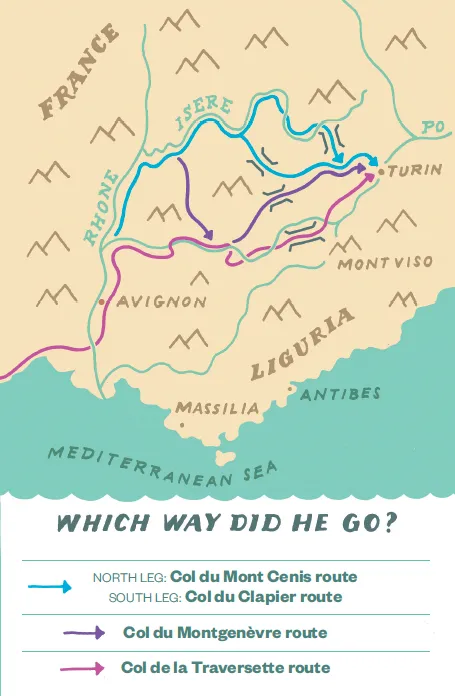
**********
Allen’s long, ascetic face, with narrow eyes and raised eyebrows, lends him an expression of perpetual seriousness that belies his sardonic good humor. This is an Englishman whose appreciation of pathogenic bacteria derived in part from Monty Python (Q: What’s brown and sounds like a bell? A: Dung!) and who named the goldfish in his backyard pond Nosey, Scrumpy, Motley, Blind Pew, Spunky and William. “I hand-feed William peas and garlic,” Allen says. “He won’t eat mealworms. He’s too discerning.”
He was delighted last year when the Belfast Telegraph headlined a front-page feature about his research team: QUEEN’S DUNG BOFFINS GET TO BOTTOM OF HANNIBAL ALPS RIDDLE IN PIECE OF 2000-YEAR-OLD POO. (“Boffin,” Allen kindly explains, is British slang for a scientist with technical expertise.) The accompanying cartoon depicted him holding an enormous roll of toilet paper. “Ever since that article appeared, people all over the world have been mailing me fecal samples,” Allen says. He pauses. “I’m only kidding!”
He learned to jest as a lad in Bristol, hometown of the great conceptual jokester Banksy. “I was a rather confused child,” Allen says. He toyed with the idea of becoming a paratrooper and then a train driver before deciding that “a career in science would be cool.” His earliest memories of scientific endeavor include designing a burglar alarm for his bedroom (age 6), leaving homemade stink bombs on his neighbor’s doorstep (age 8) and “looking at bits of unpleasant things” under the microscope (age 9). “Little did I know that the latter would later become my main source of income,” he says.
While in college—he has a doctorate in microbiology from the University of Warwick—Allen realized that he could have a lot of fun and generate research pay dirt by “doing things that other people hadn’t thought of yet”: Hence his current research interests are as diverse as understanding the microbial ecology defining the Anthropocene, corpse microbiology, hunting for microbial genetic signatures associated with ancient comet impact events and, of course, solving the Hannibal Enigma through metagenomics—the study of micro-organisms by direct extraction and cloning of DNA.
Allen is the latest British boffin to argue for the Traversette. The earliest was a naturalist named Cecil Torr, who in his 1924 book Hannibal Crosses the Alps tells us that as a teenager he set out, fruitlessly, to find traces of vinegar used, after fires were set to heat rock, in fracturing boulders that blocked the Carthaginian army. (A procedure, notes Cambridge classical scholar Mary Beard, “which has launched all kinds of boy-scoutish experiments among classicists-turned-amateur-chemists.”) Still, Torr was branded a Hannibal heretic and the route he recommended was dismissed as untenable. His theory was largely ignored until 1955, when Gavin de Beer took up the cause. In Alps and Elephants, the first of several books that the evolutionary embryologist wrote on Hannibal, he displayed something of the Kon-Tiki spirit with the claim that he’d personally inspected the topography. For centuries only traders and smugglers had used the Traversette; scholars avoided it not just because the climb was so dicey, but due to what de Beer called “the ease with which triggers are pulled in that area.”
De Beer gave the topic the scrubbing it deserved, consulting philologists, invoking astronomy to date the setting of the Pleiades, identifying river crossings by plotting seasonal flow, analyzing pollen to estimate the climate in 218 B.C., and combing through historical literature to tie them to geographical evidence. All who have played the Hannibal game know they must discover in their chosen pass a number of specific features that correlate with the chronicles of Polybius and Livy. One by one, de Beer demolished the wealth of alternatives. “Of course,” he added disarmingly, “I may be wrong.”
F.W. Walbank certainly thought so. The eminent Polybian scholar refuted de Beer’s conclusions on linguistic and timeline grounds in “Some Reflections on Hannibal’s Pass,” published in Volume 46 of The Journal of Roman Studies. His 1956 essay began with the all-time Carthaginian money quote: “Few historical problems have produced more unprofitable discussion than that of Hannibal’s pass over the Alps.” Walbank, who seemed inclined toward either Col du Clapier or Mont Cenis, was later dressed down by Geoffroy de Galbert, author of Hannibal and Caesar in the Alps, for allegedly misreading Polybius’ Greek. (If you’re keeping score, de Galbert is a Col du Clapier man.)
Indeed, in the spirited tradition of academic sport, where the gloves come off when citations are misattributed or a middle initial is misidentified, every theory of the Punic passage withers under a rebuttal. “In online forums, the squabbling can get fairly vicious,” Allen reports. “All I can say is that scientists get really emotionally connected to what they are doing. I know we are often portrayed as being cold and clinical, but we are human beings like everyone else, with all the difficulties that encompasses.”
Allen came to the work of de Beer by way of Bill Mahaney, a professor emeritus at York University in Toronto and an outspoken exponent of the Traversette. A couple of years after the two began corresponding in 2009, Mahaney invited Allen on a field trip to a mire below the pass.
In contrast to the mild, placid Allen, Mahaney is an irascible mountain man who could start an argument in an empty room. He’s 76 now and hobbled by arthritis that restricts his mountaineering, but his talent for jawing knows no bounds. Mahaney has accumulated a vast fund of tales in his expeditions to grand peaks on every continent, particularly the Alps, where over the last 15 years he has assessed possible Punic routes by surveying every pass on the French-Italian border. His quest has yielded two books: Hannibal’s Odyssey: The Environmental Background to the Alpine Invasion of Italia and The Warmaker, a novel whose lusty dialogue could have been airlifted from the 1960 film Hannibal, a Victor Mature blockbuster taglined “What My Elephants Can’t Conquer, I Will Conquer Alone!”
Chowing down with Mahaney at his home in the Toronto suburbs is a little like getting hit by a train: If you survive, you’ve got a lot to talk about afterward. “Hannibal wasn’t just a brilliant strategist and military tactician,” he says, brandishing a muffin like a boxing glove. “He understood the complexity of human behavior, that command involved more than giving orders and intimidating men to follow him—it involved compromise and shrewd leadership. He impressed the enemy with his courage and daring and swordplay, fighting on the front lines, wading into the thick of battle. He wasn’t some Roman consul sitting behind the troops. During the Italian campaign Hannibal rode an elephant through a swamp off the Arno and lost the sight in his right eye from what was probably ophthalmia. He became a one-eyed general, like Moshe Dayan.”
**********
A Roman emperor once wrote that everything we hear is an opinion, not a fact; and everything we see is a perspective, not the truth. Which pretty much sums up our understanding of Hannibal, a key figure of European history—if not for what he achieved, then at least for the traumatic effect he had on Roman memory. We know very little about him for certain. And as Mahaney points out, nearly all of what is known about him and his fantastic gamble over the Alps comes through the filter of his embittered adversaries.
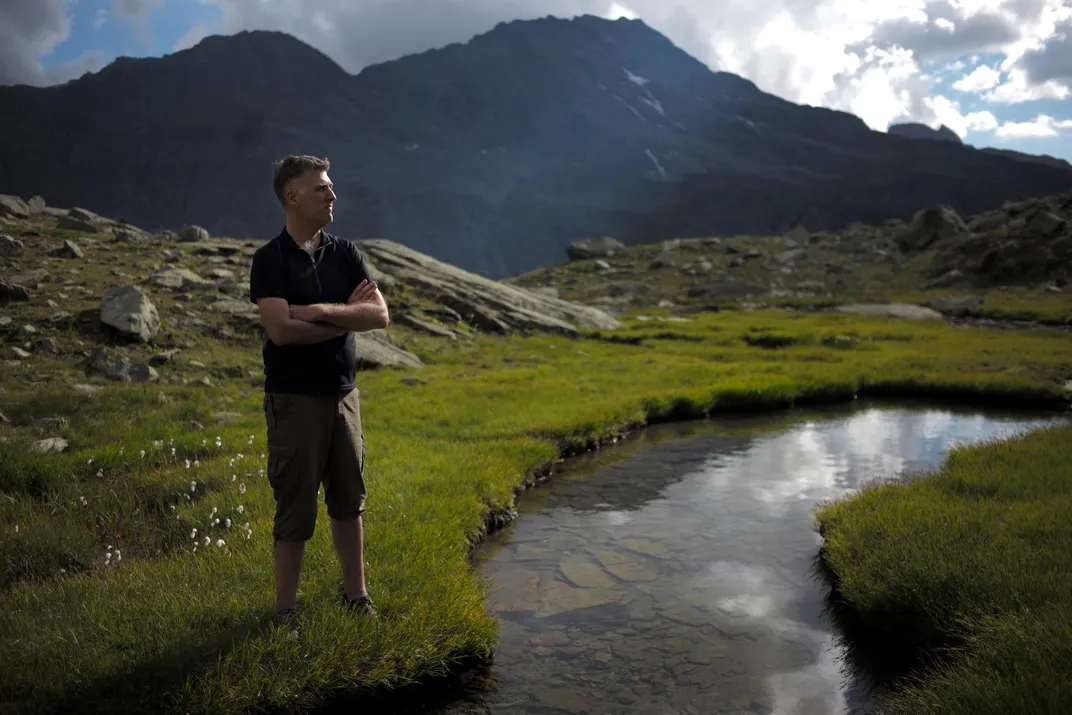
The First Punic War (264-241 B.C.) was fought over control of the strategic islands of Sicily and Corsica. The Sicilians embroiled the rising republic of Rome in their squabbles with Carthage and transformed a minor dispute into an armed conflict fought largely at sea. “When the Carthaginians had to fight, they hired mercenaries, though they had their own elite commanders,” Mahaney says. During the final years of the conflict, their leader in Sicily was Hamilcar Barca, from a prominent family of Carthaginian aristocrats. Alas, the Romans pulled an upset victory and eventually Carthage not only lost its claims to Corsica and Sardinia, but was left saddled with a debt, which the Barcas helped to pay off by establishing a Carthaginian empire in silver-rich Spain. Determined to see Carthage restored to its former glory, Hamilcar made his eldest son, Hannibal, swear lifelong enmity to the republic.
The Romans declared war on Carthage again in 218 B.C., by which time Hamilcar had been killed in battle and Hannibal was in charge of the army. In the opening phase of PWII, Hannibal consolidated and expanded control of the territory in Spain. Since the Romans had mastery of the seas, he attempted the unthinkable: attacking their homeland by surprise from the supposedly impregnable north. Hoping that the sight of rampaging elephants would scare the enemy, he assembled his animal train and headed east. “Sitting on his cot Hannibal could feel the rhythm set in motion by his troops as his squadrons marched past,” Mahaney writes in The Warmaker. In a flurry of purple prose, he adds: “The empty water jug, like a fortress, teetered slightly on the shelf, reacting very differently than water. Yes, he thought, my army will be like a fluid enveloping all stationary objects, rolling like a wave over them.”
Accustomed to the warmth of Africa and New Carthage, the liquid legions flowed through Spain, France and the trackless, snowbound Alps, holding at bay the Allobroges, a mountain tribe that set ambushes, slung arrows and rained great rocks upon their heads. “It’s a wonder Hannibal didn’t get a spear in his back,” allows Mahaney. “By the time he delivered his speech at the top of the pass, many of his mercenaries were either dead, starving to death or suffering from hypothermia. Yet Hannibal didn’t lose a single elephant.”
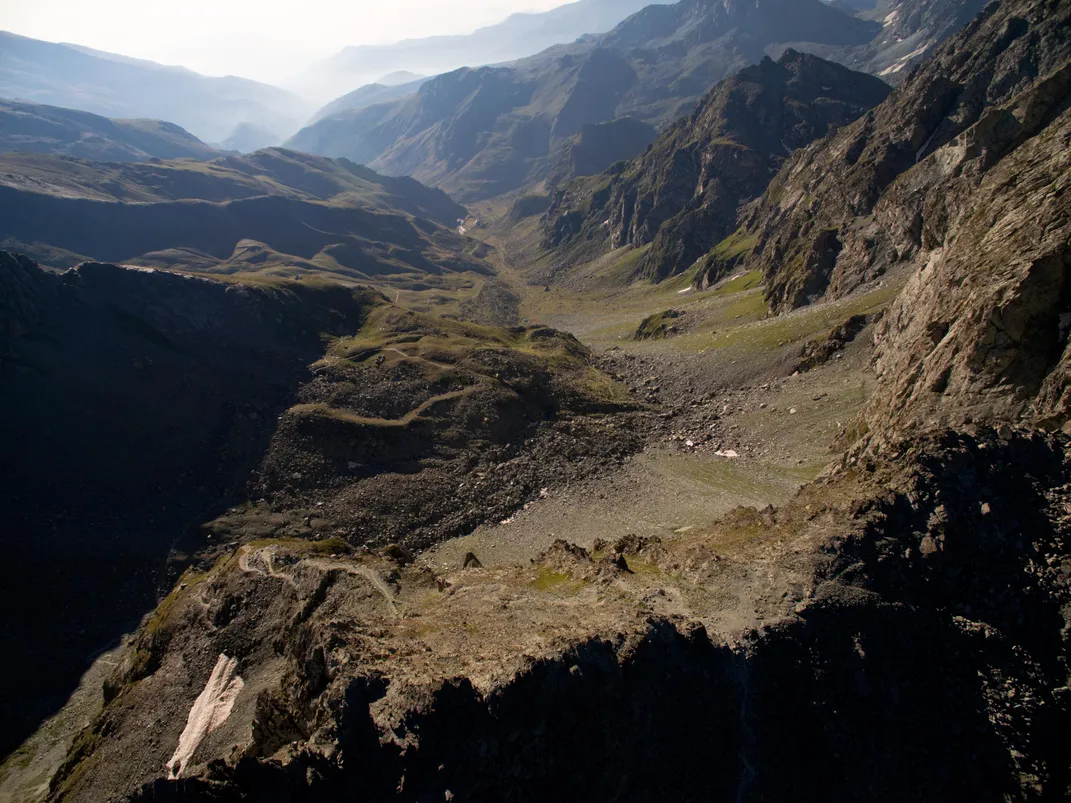
Exactly which pass that was, of course, has been a source of endless dust-ups among Hannibalologists. One thing they all seem to agree on is a set of environmental parameters that any prospective pass must fit:
- A day’s march from a narrow gorge, where Hannibal’s men walked single file and tribesmen hidden on cliffs began their assault.
- A “white” or “bare” rock place, where some of his fleeing troops spent that night.
- A clearing on the approach near the summit, surrounded by year-round snow, large enough to camp an army of at least 25,000. And a point on the summit where the troops could gaze down to the Po River Plain.
- A steep, slippery descent on the Italian side that’s hemmed in by precipices and bottoms out in a valley suitable for pasturing horses and pack animals.
Mahaney contends that the Traversette is the only pass that fulfills these criteria. Then again, Patrick Hunt—a historian and archaeologist at Stanford, former director of the university’s Alpine Archaeology Project and author of the new biography Hannibal—makes the same claim for the Col du Clapier. They’ve both studied soil chemistry and postglacial weathering of moraines along the passes. Both have scanned satellite images, scrutinized lichen growth and rock weathering rates, and modeled historical glaciation to help envision how the land today may have changed since Hellenistic times. And both think the other’s inferences are a lot of Hannibaloney.
In 2004 Mahaney discovered a two-tiered rockfall—caused by two separate accumulations of rubble—on the Traversette’s Italian frontier. The fallen mass, he says, jibes with Polybius’ description of the rock debris that impeded the elephant brigade’s path to the valley. “None of the other passes have a deposit on the lee side,” he insists.
Hunt counters that the Col du Clapier also has multilayered rockfalls, having buried much of the later Roman and earlier Celtic terraced roadbed under multiple layers of talus. He adds that “rockfall” is a mistranslation of the Greek word for landslip, and that Polybius was actually referring to a slender track along a mountainside interrupted by a drop where the slope had fallen away. “Polybius states Hannibal’s forces slipped through fresh snow to ice below from the previous winter on the initial descent,” he says. “Mahaney tries to get around the lack of snow traces on the Traversette by reading snow and ice as firn, or frozen ground. This is not philology, this is creative wishful thinking.”
Hunt thinks the Traversette’s descent would be narrow for elephants; Mahaney, who observed the beasts traversing Mount Kenya when he climbed there, thinks they’d have had no problem taking the high road. And while Hunt thinks the Traversette would have been too high and the terrain too treacherous for humans, Mahaney thinks the Col du Clapier would have been too low and the terrain not treacherous enough: “An army of nuns could walk straight down off the Clapier into Italy,” he says, snickering like a schoolboy who’s just discovered there’s a city in France named Brest. “Hunt implies that the Traversette may not have been passable in Hannibal’s time, but I don’t think he has a grasp of what Hannibal’s warriors actually looked like. You wouldn’t want to meet them on a dark night, anywhere. They were crack troops who could cover 20 miles a day while lugging food and weapons.”
Curiously, there’s no record of Punic armaments of any kind having been recovered from the various passes. Nor have archaeologists found evidence of Punic burials or Carthaginian coins. Mahaney is seeking financial backing to conduct further research at the Traversette mire, a site, he says, that might benefit from the use of ground-penetrating radar. “But first we’d need permits from the French government. And the French, for all intents and purposes, invented ruban rouge,” Mahaney says, using the French term for red tape. Chris Allen notes with gentle irony: “In the absence of a radar scan of Hannibal’s Mire, the parasites we dug up might well be the most intact relics of his passing army.”
**********
Hannibal’s Mire lies in a soft, enclosing gorge about the size of a soccer pitch. The sides of the surrounding hills splinter into a small stream that purls through moss and ferns and peat hags. For all the stark drama—shadows scudding across cliffs, sudden shafts of sharpening air, clouds draping heavily over peaks—the bog creates a sense of serenity. Absorbed in a fragile trance, Allen studies a knot of tadpoles wiggling in a marshy puddle. A faint scent of mint fills the air. At last Allen says, “Our purpose here is to try to strengthen the pool of scientific data. That’s really all we can do. It’s up to the modern historians to back it up.”
Ancient historians wrote that after crossing the mountain pass, Hannibal’s army spent 15 years marauding through the Italian peninsula. “His men slaughtered 50,000 Roman soldiers at the Battle of Cannae in 216 B.C.,” says Allen, “but they never took Rome.” Starved of supplies and fresh troops by his rivals back in Carthage, Hannibal was recalled home to defend the city-state against the depredations of Roman general Publius Cornelius Scipio—and defeated at the epic Battle of Zama. He was living in exile near present-day Istanbul when Roman legionaries tracked him down. He died in 183 B.C. of poison, self-administered—his alternative to being apprehended and paraded in chains through the streets of Rome. Thirty-seven years later Carthage was captured and razed.
“Think of what Hannibal accomplished over six months,” says Allen. “He did something that nobody had even imagined doing. Wouldn’t it be something if, on this spot, he marshaled his forces and inspired them to succeed against the odds?” In the spirit of Hannibal, scientists have taken a novel approach to a thorny problem.
The research Allen oversees at Queen’s University Belfast is slow-going and funding is negligible. But Allen believes the project has all sorts of implications for environmental DNA, the study of telltale plant and animal genetic materials collected from soil and other substrates. “Over the long term, environmental microbiology could be the key that helps solve many of the big problems—from new drug discovery to energy and carbon capture. We all know how important soil is, but the surprising thing is we hardly understand it. Metagenomics is the tool that will allow us to finally optimize our interaction with soil.”
Allen can envision combining meta-genomics with pretty much any scientific discipline, from engineering to theoretical physics to medicine. “I’ve been inspired by our Clostridia findings to attempt a study of ancient samples of Clostridia difficile from humans,” he says. A hospital superbug resistant to most antibiotics, C. difficile mainly afflicts the elderly, but younger people are falling prey to it and the disease has become more severe, accounting for nearly 30,000 deaths in the United States in 2011. “It seems there are definite genetic changes in some modern strains. If we turned the clock back 2,000 years and pulled out human strains [of Clostridia] from the Hannibal Mire, would they have the same genetic changes? Would there be differences we don’t know about, leading to new hypotheses? Would these differences allow us to find new ways to protect patients from infection? Conceivably. We are in the middle of a scientific revolution that most people don’t even realize is happening. Maybe this is the dawn of the Metagenomic Age.”
So far, the research team has isolated five tapeworm eggs from the muck. Genome sequencing of the eggs is high on Allen’s to-do list. “The more genetic information we have, the more precise we can be about what type of animal left the droppings and perhaps its geographic origin,” he says. If Allen can link the DNA to a horse that comes only from Africa or Spain, he’ll be satisfied that he’s on the right track. If he can link it to an elephant—improbable considering that horses are spooked by pachyderms and require separate space to forage—he would really be in business. Or possibly not. Hannibal’s kid brother Hasdrubal followed him 11 years later and brought war elephants along, too. As you might have anticipated, there’s no clear consensus on whether Hasdrubal took the exact same path, so finding an elephant tapeworm wouldn’t definitively prove the route was Hannibal’s.
Still, Allen is tickled by the prospect of exhuming a tapeworm from elephant dung during his next field-research trip, on the Italian side of the Traversette. Wouldn’t it be funny, he quips, if the real poop on Hannibal’s alpine trail were revealed in a scoop of real poop?
